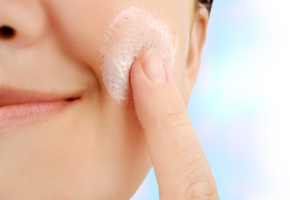Facial Moisturizing for Summer
One of the questions we hear the most in the skincare industry is, “Do I still need a facial moisturizer in the warm, summer months?”
The answer is undoubtedly “Yes!”
You want to pay attention to texture and formulations, but ALL skin types – even oily skin – still need to hydrate and moisturize in the summer.
And don’t forget, there IS a difference between body lotions and facial creams – never mix the two. Heavier formulations of body creams could cause your delicate facial skin to break out or hyper-react.
Let’s break down some of the most common skin types and what types of moisturizer or facial cream to use.
1. NORMAL SKIN
Most normal skin reflects the changing seasons, loosing hydration and becoming more dry in the winter months and slightly more oily or hydrated when the summer comes.
Excessive indoor heating, warm baths and less humidity during winter months will require heavier, richer facial creams usually blended with a base of oil. So, alternatively, normal skin will require a lighter moisturizer. Look for water-based versions or vitamin-rich serums or ceramides. Ultra-light facial lotions will absorb well into the skin while limiting excess oil production. Water-based lotions should included natural ingredients calm sun-damaged inflammation, such as chamomile, Calendula and Aloe vera. Also look for Vitamins E and A for natural anti-aging properties.
2. COMBINATION / ACNE-PRONE SKIN
Similar to normal skin, but oily in the T-zone, combination skin may require using two different moisturizers if your skin type is very unbalanced. Stick with the same water-based moisturizer on the whole facial area as for normal skin, but use combinations of herbal properties for the oiler-T-zones of the forehead, nose and chin. For instance, on the normal-skin areas of the cheeks and neck, use the lighter formulations with natural anti-redness and sun-healing herbs mentioned above like Aloe vera and Calendula or Oatmeal. Then for the T-zone, choose herbal ingredients that help keep excess oil and breakouts in check – like lavender, rosemary and green tea.
3. OILY SKIN
Despite the false myth that oily skin doesn’t need any additional moisture – the opposite is actually true. Even oily skin responds with more balanced oil production when you ADD moisture. Choose a lighter Vitamin infused serum or herbal formula that does double duty for oil production and anti-aging including Vitamin E, A, C and Rosemary.
4. DRY SKIN
To keep flakiness and wrinkles at bay, dry skin types still demand a heavier version of facial moisturizer for summer – a richer cream vs. a light lotion or serum. You might continue to use the same brand or formulation from your winter skincare routine, but spritz your face first with a refreshing toner or witch hazel to help dilute the cream and increase absorption. Choose herbal formulas that help your skin fight free-radicals and sun damage with natural Zinc Oxide and Vitamin E and C.
And as always, NO skin care facial routine would be complete without SPF or sun protection. The Vivoderm Zinc Repairing Facial Cream combines natural Zinc Oxide sun protection with an oil-based moisturizer and natural herbs to provide 15 SPF coverage for your daily routines. For longer sun exposure, use a higher SFP, like 50-60 when possible.





